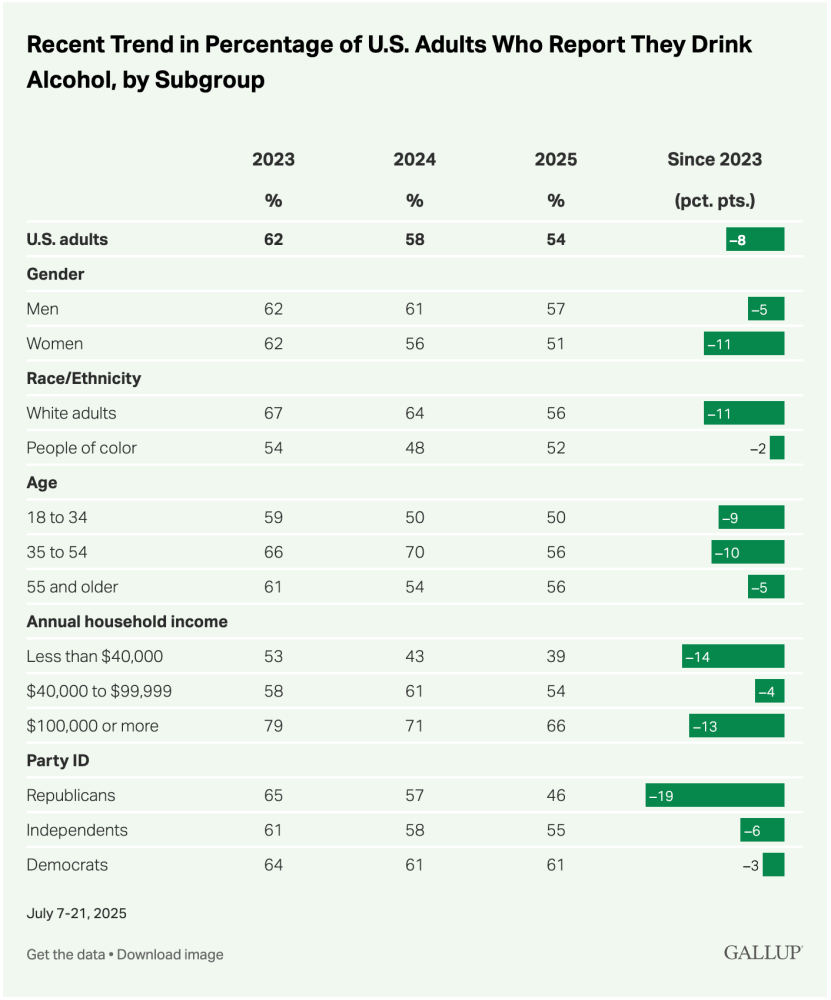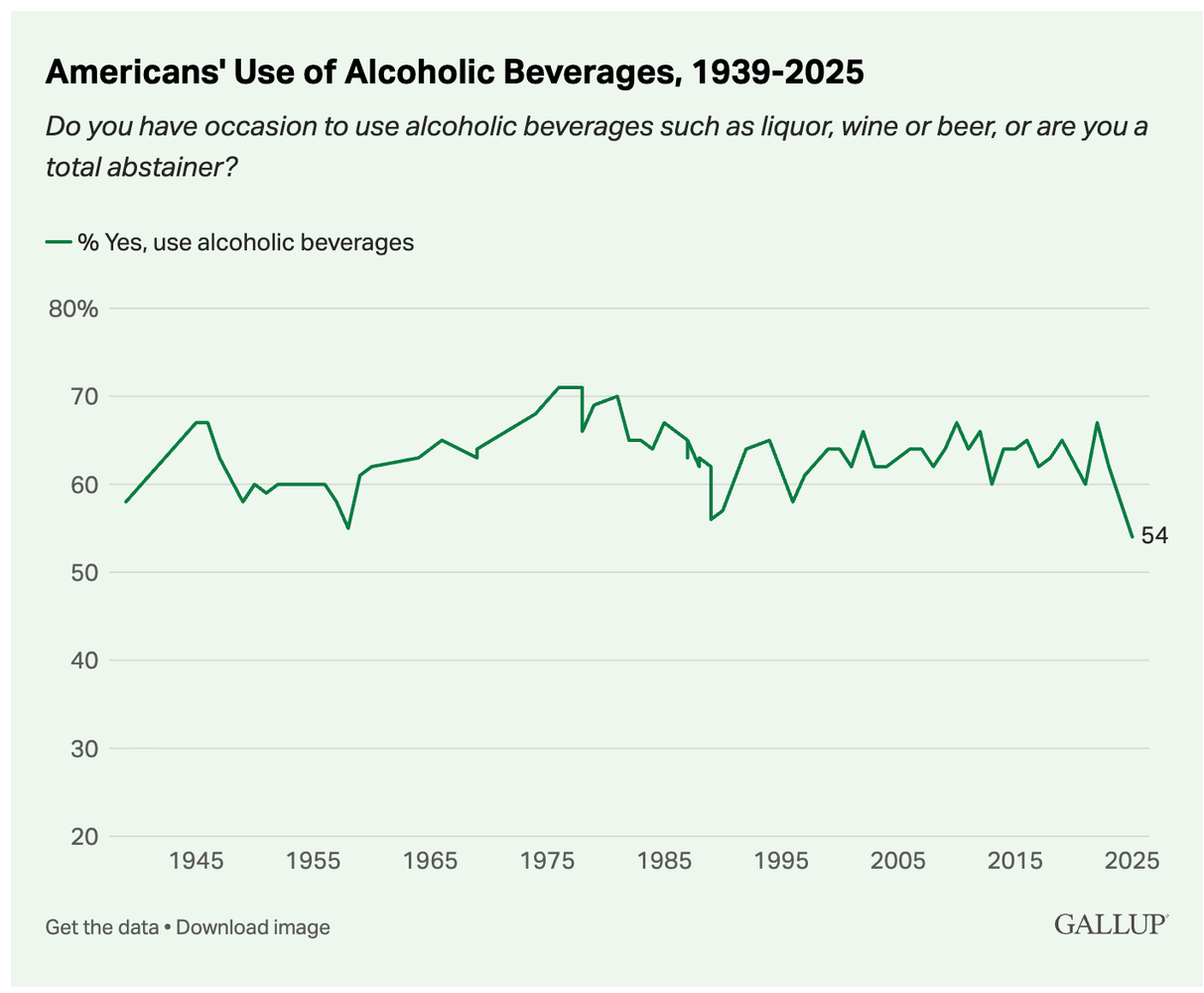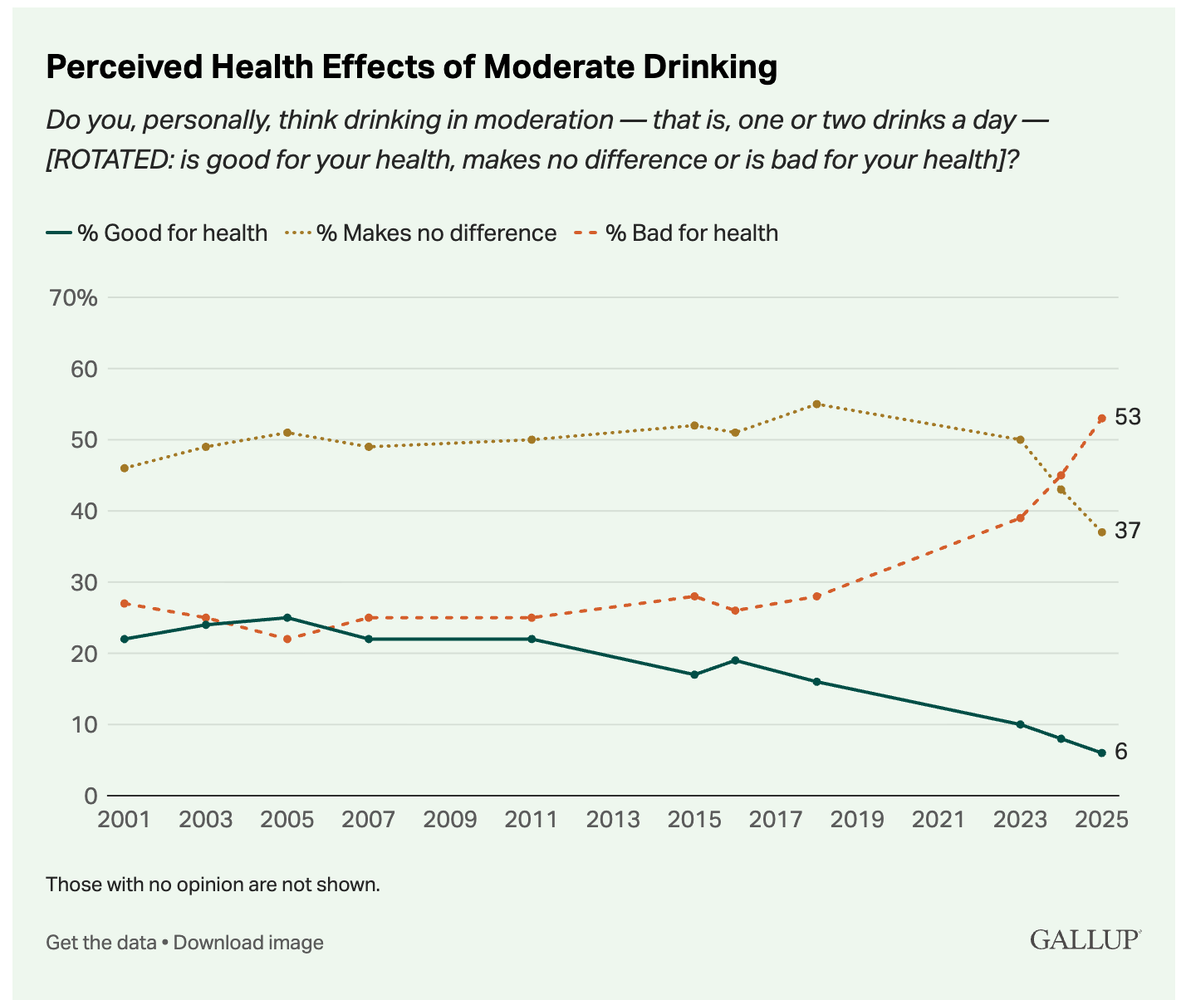Drinking patterns in the U.S. continue to shift. The latest Gallup survey, published this summer, found that only 54% of adults now say they drink alcohol. This is the lowest share in the history of the poll and a steep fall from 62% just two years ago. Gen Z and Millennial women are driving this trend:

Total women dropped from 62% to 51%. High income households fell from 79% to 66%. Republicans recorded the largest political change, down from 65% to 46%. These numbers show that the shift is broad and rapid.
Young adults are a central driver. Only half of people under 35 drink compared with 59% in 2023. At the same time, two thirds of this group now believe alcohol is bad for their health. Concern about health is also climbing among middle-aged and older adults with half of them now saying drinking is harmful.

The average number of drinks per week has fallen sharply. In the mid-1990s Americans who drank reported about five drinks per week. Today the average is just 2.8. That reflects fewer drinkers and lighter drinking among those who still consume alcohol.
The reasons are varied. Health and wellness are a higher priority. Prices for drinks in bars and restaurants are higher, making moderation a financial choice as well. Alcohol-free products such as mocktails and non-alcoholic beers are gaining shelf space and social acceptance. Social campaigns like Dry January make abstaining a normal behavior.

The overall message is that alcohol is losing ground as a social habit. The change is strongest among younger adults, women, and higher earners, but the decline touches nearly every demographic. As of October 2025, the U.S. drinks less often, in smaller amounts, and with more concern about health risks than in any previous generation.